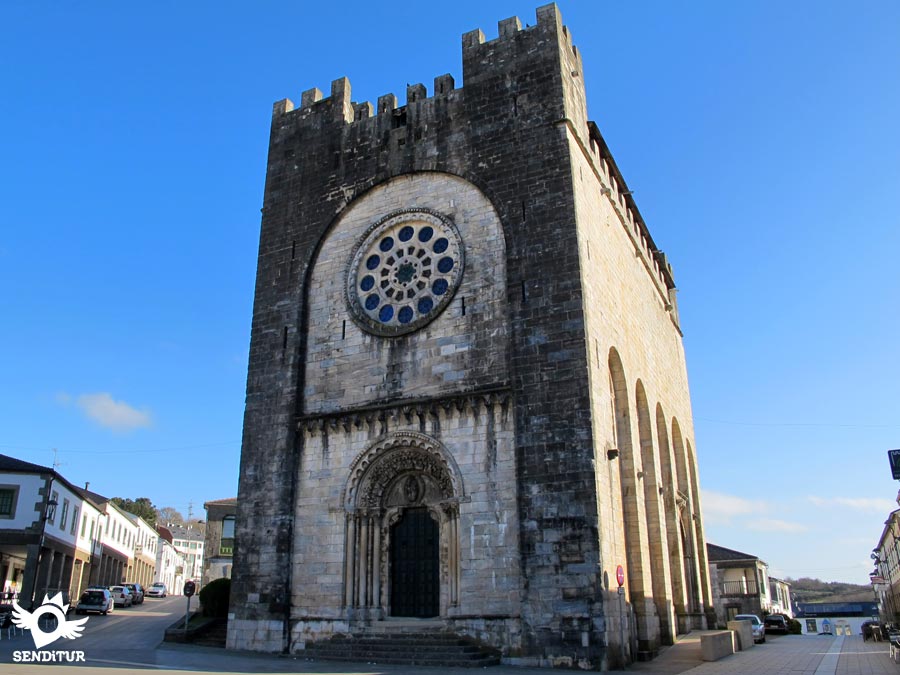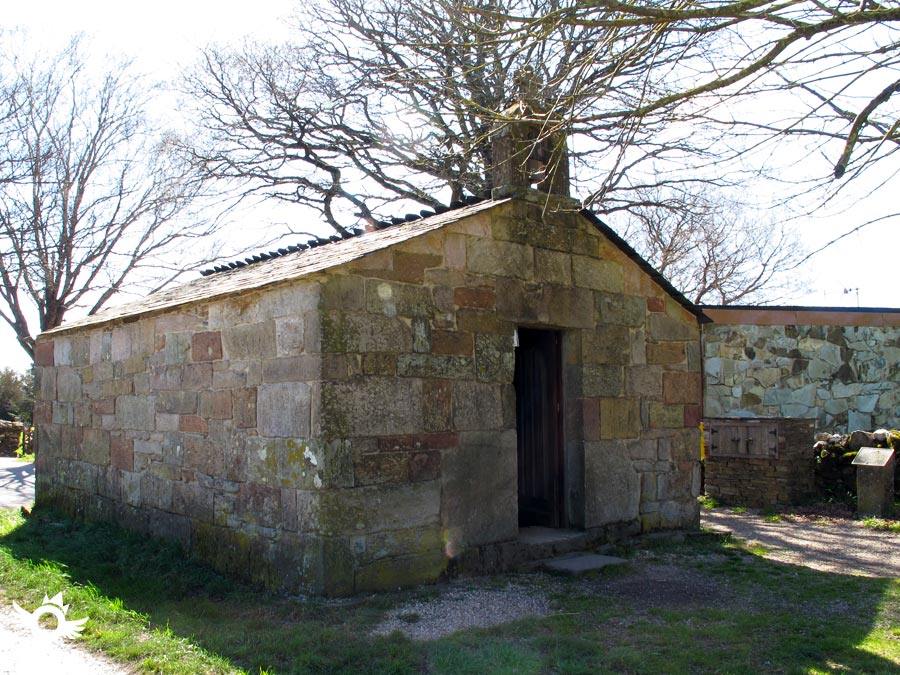It is located on the top of the Monte do Cristo on the banks of the Miño River, the places of San Pedro and O Souto and the villages of Gonzar, Toxibo, Castromaior, Hospital da Cruz and Ventas de Narón, among others, are part of its council. The history of the current Portomarín began in 1962 when the waters of the Belesar reservoir, fed by the flow of the river Miño, submerged the old Portomarín in the black water depths. Curiously years before, on 8 February 1946, the village of Portomarín had been declared a Historic-Artistic Site, a village that is said to have been one of the most beautiful on the medieval Way. Already in ancient times there were settlements in the area, as attested by the numerous castros and archaeological remains found such as Castromaior, Castro del Vires, Castro Bedro, Castrolobrixe... The history of Portomarín, both the old and the new, has always been linked to its bridge. It was the Romans who built the first bridge in the village in the 2nd century. When it was rebuilt in 1112, a suburb arose on its side that the river Miño divided and the bridge united. These two neighbourhoods were named San Pedro on the left bank and San Juan on the right. The bridge was also one of the few, along with that of Lugo and Ourense, that allowed the Miño to be crossed without having to do so by boat.

In 792 Portomarín was already named "Portumarini", its origin seems to be related to San Rosendo, bishop of Mondoñedo and founder of the monastery of Celanova in the 10th century. During the Middle Ages three orders of cavalry coexisted in Portomarín, on the left bank of the river were the Knights of Santiago and the Order of the Temple and on the right bank the knights of the Order of Saint John of Jerusalem, who alternated their dominion over the town, because under the reign of Alfonso IX Portomarín was under the auspices of the Order of Saint John of Jerusalem, while that of Santiago did so at the wish of Archbishop Pedro Arias. In the Codex Calixtino Portomarín is named Pons Minea, bridge of the Miño, and appears as an obligatory passage in the route jacobea and one of the most important milestones of the Way after O Cebreiro, being its highest point especially between the tenth and twelfth centuries. But the history of Portomarín was not submerged under the waters of the river that for centuries had been part of it, it remains in the retina of some and in the memory of others and in the monuments that stone by stone were saved and moved to their current location and that day by day remember the greatness of the place.

To start your visit to Portomarín, there is nothing better than to do it from the viaduct that crosses the river Miño and to get in front of the great staircase that leads to the chapel of the Virgen de las Nieves, located in an arch of the old medieval bridge. The church of San Pedro, Romanesque from the 10th century, although according to the inscription on the façade of the temple it was consecrated in the year 1182, close to it the palace of Berbetoros. In the square of the Counts of Fenosa is located the house of the Count of La Maza, which today houses the town hall. The church of San Juan or San Nicolás, as it is called today, dates from the 13th century, is a fortress-temple, one of the most important examples of Romanesque architecture in Galicia and one of the most charismatic monuments on the Way. Its main façade is a synthesised version of the Pórtico de la Gloria of the Santiago Cathedral with the twenty-four elders of the Apocalypse and the Pantocrator. In the popular architecture of Portomarín the masonry and slate houses stand out. Outside the town centre, in the small village of Toxibo, a hórreo, privately owned, attracts the visitor's attention with its noble bearing.
.jpg)
In Gonzar, the main nucleus of the parish of Santa María de Gonzar, one can contemplate the church of Santa María. Among the dozens of good houses in Castromaior is the parish church of Santa María, built in the 12th century in a pure rural Romanesque style. In a hillock a short distance from the centre you can visit the archaeological site of Castro Mayor, from which the village receives its name. Vendas de Narón is a village that had its historical importance because its surroundings were the scene of the battle that in the ninth century the Christians imposed on the Moors, in the Middle Ages was known as Sala Regina, perhaps because there were many sales with the consequent trade, in the village the chapel of A Madalena has carved in its wooden door the symbols of the chalice, the cross and the shell of the pilgrim. The culprit of the disappearance of Portomarín the old, the reservoir of Belesar offers in exchange good views, walks and parks to enjoy in nature. The village, apart from the typical gastronomy and wine, also offers the opportunity to enjoy in situ with its famous aguardiente, with party included.

Portomarín celebrates its patron saint festivities on the first weekend in September. It also pays homage to the Virgen del Carmen on 16 July.
On Easter Sunday the Festa do Augardente is celebrated in Portomarín. The alquitaras or alembic stills work tirelessly to produce the best aguardiente in the world, according to the people of the place. And at night the party closes with a great popular queimada enlivened with verbena and performances.
In Portomarín, in summer, folkloric Sundays are celebrated, consisting of artistic and cultural performances in which foreigners and locals enjoy the local traditions.

It is historically referenced in 1112 the bridge of Portomarín was destroyed by order of Doña Urraca, queen of Castile, in order to stop the advance of the troops of her husband King Alfonso the Battler and years later this same queen ordered him to rebuild a certain Pedro Peregrino, and here begins the legend or history transmitted orally that is how they arise, because of this famous architect of the time, mysterious personage of which nothing or little is known for lack of references, it is said that he could have been the father of the Master Mateo, creator of the Portico of Glory in the Cathedral of Santiago.
We can reach Portomarín following the LU-633 that joins it on one side with Sarria and Paradela among other localities and on the other with Gonzar, Castromaior and Hospital da Cruz located on the N-640 that connects Lugo and Ourense. Portomarín is also reached by the LU-612 and the LU-613 that links the town with neighbouring towns such as Berlai or Cendoi, among many others.
Portomarín has a bus service that connects it with Lugo and Sarria. For further information the telephone numbers are 982 530 125, Sarria bus station, and 982 223 772 of the company Portomarín S. A.
Portomarín
San Pedro
O Souto
Toxibó
Gonzar
Castromaior
Hospital da Cruz
Ventas de Narón
SENDITUR is not responsible for any variation in the information described, as well as for the misuse of its guides and recommends that everyone be responsible and prudent in carrying out the activity. Likewise, we invite you to document yourself with books and specialized guides to complement the information described. From the commitment of SENDITUR with Nature and the respect to the balance of the environment, SENDITUR urges you to travel in a responsible way, with low environmental impact and respecting at all times the Natural, Cultural and Social environment wherever you go. For any suggestion, SENDITUR invites you to send an email to
Continue watching …